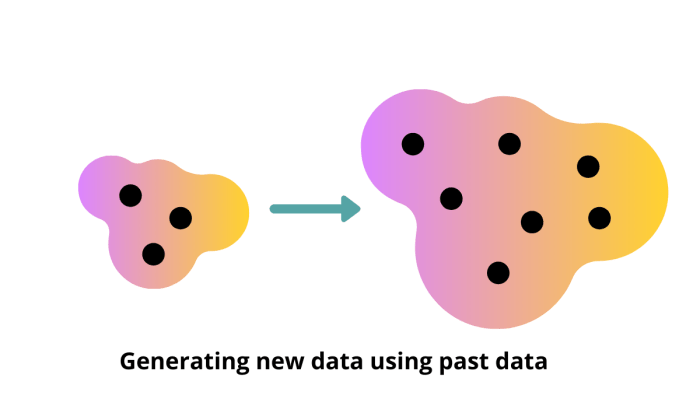Closed Source LLMs: Shared Secrecy
Which characteristic is common to closed source large language models? The answer lies in their inherent secrecy. These powerful AI systems, while capable of generating human-like text, are shrouded in a veil of proprietary code, making their inner workings a mystery.
This secrecy extends to the training data used to build these models, leaving users with limited understanding of their potential biases and limitations.
Closed-source LLMs, like the models developed by Google and Microsoft, operate under a different set of rules than their open-source counterparts. Their creators maintain tight control over their development and deployment, dictating how they can be used and accessed.
This approach offers certain advantages, such as increased security and control over the technology, but it also raises concerns about transparency, accountability, and the potential for misuse.
Control over Model Updates and Deployment
Closed-source large language models (LLMs) are developed and maintained by specific companies or organizations that retain exclusive control over the model’s updates and deployment. This control allows them to manage the model’s evolution, ensure its stability, and tailor its capabilities to specific needs.
Advantages and Disadvantages for Users, Which characteristic is common to closed source large language models
This exclusive control has both advantages and disadvantages for users.
- Advantages:
- Improved Model Stability:Controlled updates and deployments contribute to a more stable and predictable model, reducing the risk of unexpected changes or performance degradation. This is crucial for users who rely on the model for consistent results, especially in critical applications like medical diagnosis or financial analysis.
- Enhanced Security:By controlling updates and deployments, developers can implement robust security measures to prevent unauthorized access, manipulation, or misuse of the model. This is particularly important for sensitive data and applications where security is paramount.
- Targeted Customization:Developers can tailor the model’s updates and deployments to specific user needs and applications. This allows them to optimize the model for specific domains or tasks, enhancing its relevance and performance for specific user groups.
- Disadvantages:
- Limited User Input:Users have no direct influence on model updates and deployments, which can limit their ability to shape the model’s evolution according to their specific needs or preferences.
- Lack of Transparency:The lack of transparency surrounding model updates and deployments can raise concerns about the model’s objectivity, bias, and potential for misuse. Users may not be aware of the rationale behind specific updates or deployments, potentially leading to distrust or skepticism.
- Potential for Vendor Lock-in:Exclusive control over updates and deployments can create vendor lock-in, making it difficult for users to switch to alternative models or platforms. This can limit user choice and flexibility in the long run.
Implications for Model Stability and Long-Term Maintenance
Control over model updates and deployments is essential for maintaining model stability and ensuring long-term maintenance.
- Regular Updates and Bug Fixes:Controlled updates allow developers to address bugs, improve performance, and incorporate new features. This ensures the model remains functional and relevant over time, adapting to evolving user needs and technological advancements.
- Data Management and Security:Controlled deployments enable developers to manage data access and security, preventing unauthorized use or manipulation of the model’s training data. This is critical for maintaining the model’s integrity and preventing potential biases or inaccuracies.
- Long-Term Support and Maintenance:Exclusive control allows developers to provide long-term support and maintenance for the model, ensuring its continued availability and functionality. This is particularly important for applications that rely on the model for critical operations or decision-making.
Impact on Research and Development

The closed-source nature of large language models (LLMs) has a significant impact on the broader field of artificial intelligence (AI) research. While it offers certain advantages, it also presents limitations that hinder progress in understanding and advancing the technology.
The Influence of Closed-Source LLMs on AI Research
Closed-source LLMs pose both opportunities and challenges for AI research. The lack of access to the model’s architecture, training data, and internal workings limits researchers’ ability to understand how these models function and improve upon them. This can lead to a situation where progress in AI research becomes dependent on the proprietary developments of a few companies, potentially hindering innovation and the emergence of new ideas.
Benefits and Limitations of a Closed-Source Approach
- Benefits:
- Closed-source LLMs can offer a competitive advantage by protecting intellectual property and preventing competitors from replicating their models.
- They can provide a controlled environment for development and deployment, ensuring quality and stability.
- The closed-source approach can facilitate faster development cycles, as companies can iterate on their models without needing to share their work with the broader research community.
- Limitations:
- Closed-source LLMs limit the ability of researchers to understand the model’s inner workings and identify potential biases or limitations.
- They hinder the development of new AI techniques and architectures, as researchers are unable to learn from and build upon existing models.
- The lack of transparency can lead to concerns about the ethical implications of these models, particularly in areas such as fairness, accountability, and control.
Comparison with Open-Source Models
Open-source LLMs, on the other hand, provide researchers with access to the model’s code, training data, and internal workings. This allows for a more collaborative research environment, where researchers can share their findings, improve upon existing models, and develop new techniques.
Open-source models have been instrumental in driving progress in AI research, particularly in areas such as natural language processing (NLP), computer vision, and robotics.
Summary: Which Characteristic Is Common To Closed Source Large Language Models
The closed-source nature of these models raises important questions about the future of AI development. While proprietary models offer potential benefits, the lack of transparency and access to their inner workings creates a complex landscape with potential risks. As we move forward, finding a balance between innovation and responsible development will be crucial for ensuring that AI technology benefits all of society.






